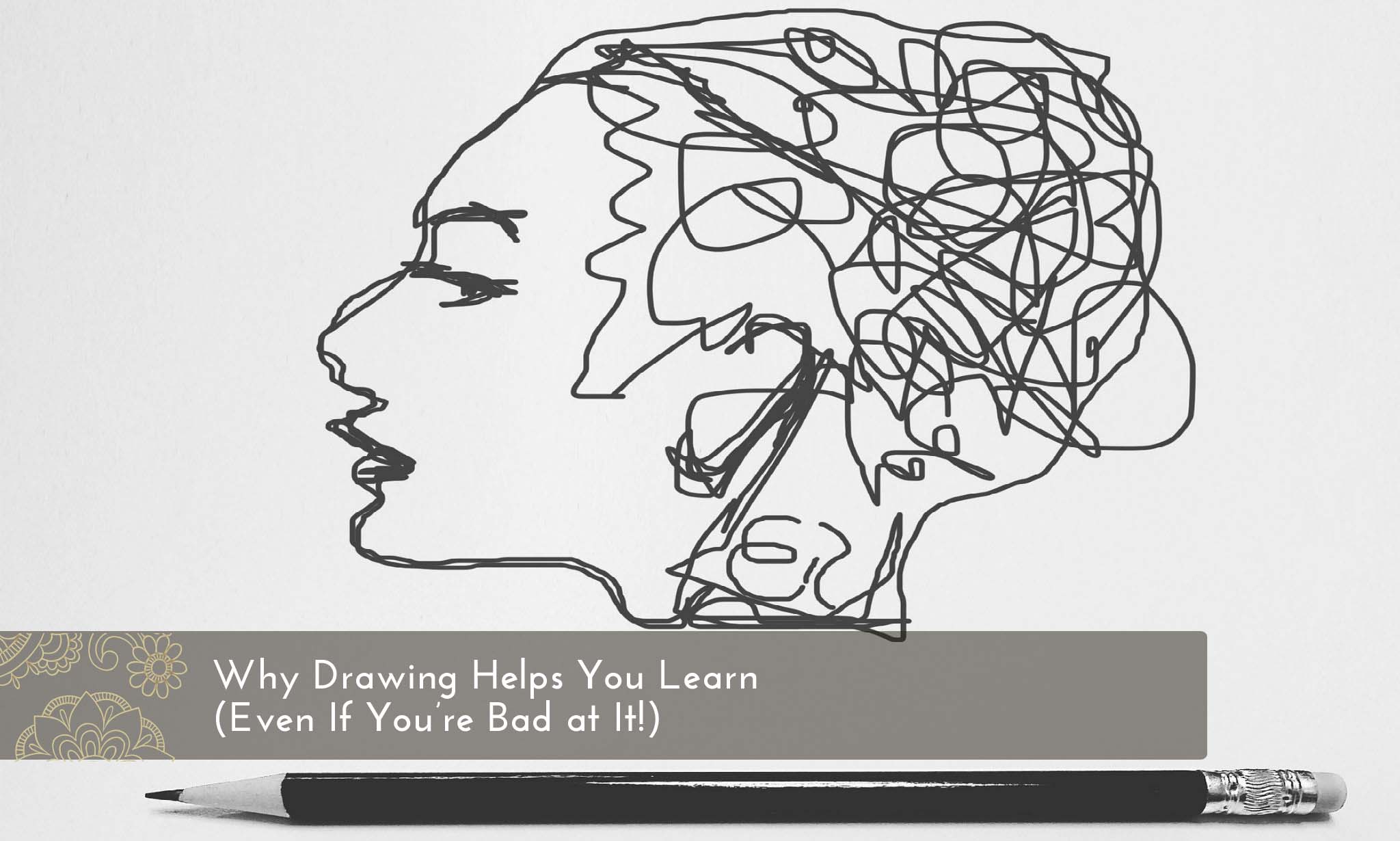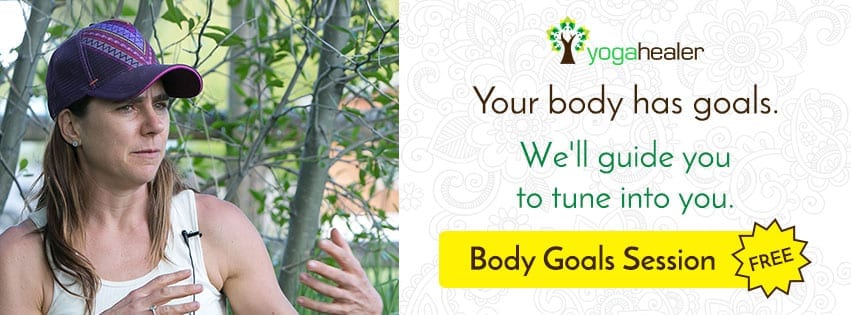Why Drawing Helps You Learn (Even If You’re Bad at It!)
By Kirstin Pinit.
Our bodies are incredible machines that receive, process, and evaluate all manner of substances. Just as we use nutritious food to fuel our physical bodies, we take in and assimilate complex information that becomes knowledge, insight, and wisdom.
I’m blown away by the massive collection of resources (webinars, coaching calls, books, worksheets, videos, podcasts, articles, group forums, and more) that are offered to the Yogahealer community. It’s a lot of material to receive, sort, process, and use. Are you getting the most out of it? How do you integrate this great teaching into a form and format that’s memorable and actionable?
Supercharge Your Learning
I’m just about to complete the 10-week Body Thrive Course. One technique that I’ve been using to capture and process Body Thrive teachings is drawing my notes. Doodling, Sketchnotes, visual notetaking, and mind mapping are all methods of visually recording information — alternatives to traditional written notes (often taken fast and furiously to capture a speaker’s message verbatim, lest you miss a word that you may be tested on later… Yikes!).
There’s a bunch of great reasons to doodle your notes. Here are a few:
- Ninety percent of the information received by the brain comes in through the eyes. Making our notes visual uses this sense to our great advantage in taking in and processing dense, complex information.
- Pictures are easier to understand and remember than words. Think about the popularity of infographics in mass media today. They incorporate text and symbols to organize and convey meaning. They’re fun, interesting, and memorable.
- Doodling your notes engages multiple learning modalities (seeing, hearing, writing, and movement) and triggers an emotional response. This is how deep learning happens.
The Proof Is in the Doodlin’
The value of “doodling with a purpose” is strongly backed by science and real-world evidence. This TED talk, this scientific research (and also this research), this case study, and this blog of Sketchnote examples should be enough “proof” of its validity. It should get you curious enough to give visual notes a try.
I enjoy the process and benefit from visual note taking because it:
- Forces me to stay engaged with the content. I can’t multitask when I’m listening, processing, and drawing my notes, so I get more out of each lesson. My fun, colorful notes are something I’m more likely to reference later.
- Helps me find personal relevance and meaning. Visual notetaking helps me connect the dots between the lesson and my own experience. It allows me to see and integrate personal meaning. This doesn’t happen if I’m slavishly taking notes verbatim.
- Plays well with others. When I share my notes on the Body Thrive forum, the responses are positive, emotional, and affirming. It gives me a boost to share and to inspire others to try this technique.

It’s Not an Art Project
Probably the biggest objection to drawing your notes is some version of “I’m not creative” or “I can’t draw.” I encourage you to let that all go. First, it’s not about creating a piece of art. The purpose of doodling your notes is to help you engage the senses, learn, and remember what you’re studying. Second, LIVE THE HABITS! A core principle of behavior change and identity evolution is to embrace the Beginner’s Mind. Allow yourself to explore, try, and experiment.
Here’s how you start. Simple materials are best. Get an unruled drawing pad and a “fast pen” that allows your writing to flow. I like a gel pen that glides on the page and doesn’t smudge. Markers are optional, but color is great for adding emphasis. Plus, it ups the fun factor. Learn more about the visual notetaking process here. You may want to try a no-drawing approach. Don’t overthink it; just give it a go. And don’t be shy. Share your doodles and inspire your peeps.
Ready, set, doodle!
BIO:
 Kirstin Pinit is a Yoga Health Coach in training. She’s a spiritual seeker who practices compassion and open-hearted living in lots of ways — on the Yoga mat, skateboarding with her two boys, or hiking near her home in the Pacific Northwest.
Kirstin Pinit is a Yoga Health Coach in training. She’s a spiritual seeker who practices compassion and open-hearted living in lots of ways — on the Yoga mat, skateboarding with her two boys, or hiking near her home in the Pacific Northwest.
See more on her Facebook & Instagram.



